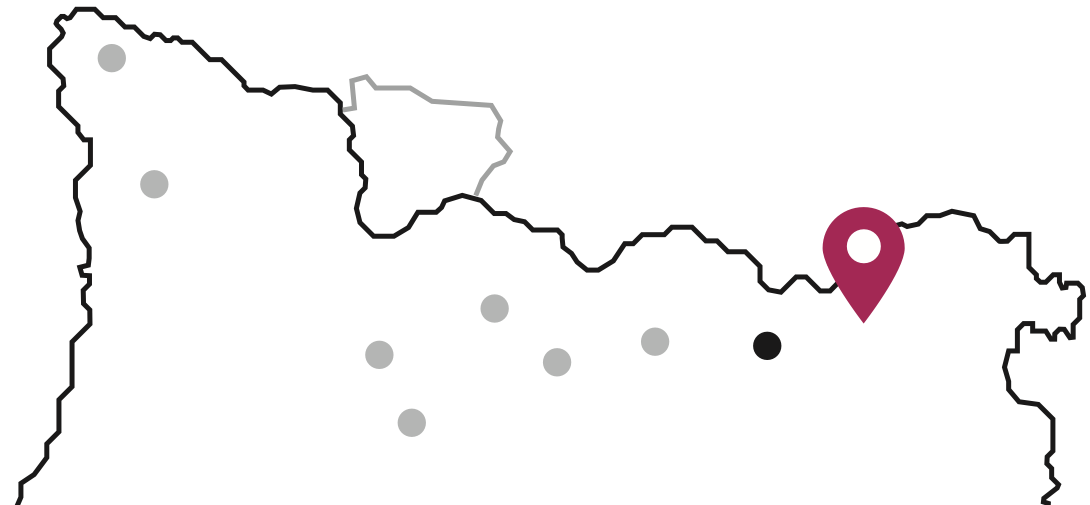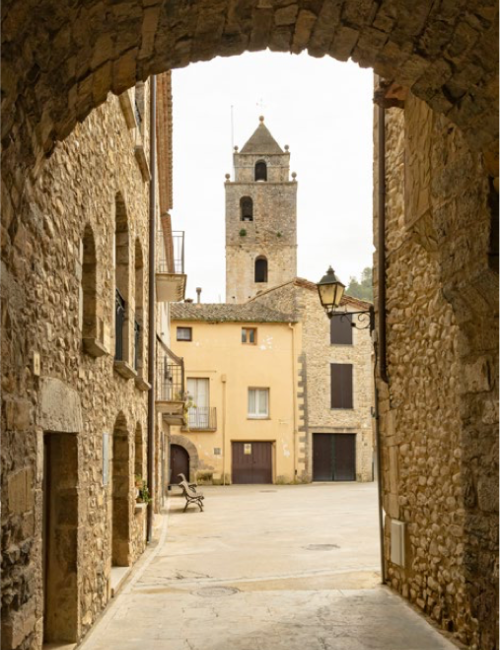At the height of the travertine bluffs, the stream of La Caula falls 30 metres into the abyss, forming in its pass various waterfalls and a natural pool which turns the Muga's surroundings into a purely bucolic landscape. Plus, the shore of this location is home to a restaurant with a perfect terrace to contemplate the landscape.
From the high-mountain forests of the eastern Pyrenees to the coves of Costa Brava, the Muga river has defined the landscape in all the areas of the county through which it flows. Its cross-border watercourse has allowed a traditionally agrarian culture to develop, serving, among other purposes, to water fields and gardens, power flour mills and create ice in small wells along its banks. In this way, following the river’s course is synonymous with discovering the essence of the county of L’Alt Empordà.

From the Pyrenees to the firmament. The Albanyà Observatory, in L’Alt Empordà, holds outdoor night events which will allow you to travel through space guided by the teachings of resident astronomers. The experience combines the projection of live telescopic images with general content on astronomy.
Built atop an ancient Roman settlement, some of the streets in this town today are the same as the ones first laid seven centuries ago. Located in the most unknown part of Empordà, its historical legacy, visible both in the roads and in its monuments, makes visiting it a total trip back in time.
After Delta de l’Ebre Natural Park, this is the second most important wetland area of Catalonia. These pools which fill around 5,000 hectares are the refuge of more than 300 different bird species, including flamingos, storks and herons, which is why it is highly advisable to bring binoculars.
The Muga river area is home to an infinite number of biking trails which wind between thick Pyrenean forests and landscapes more typical of the coast, and the fact is that the river's trajectory draws a fine blue line on the map from Sant Llorenç de la Muga to its mouth in the bay of Roses.
The sand built up on one of this reservoir's shores makes it a perfect mountain beach. The scenery invites one to jump into the water and partake in all sorts of activities. The most popular of all is kayaking. Following the course of the Muga river, one can observe the ruins of Sant Llorenç left buried under the dam.
Declared an Asset of Cultural Interest in 2019, the monastery comprises a set of Romanesque structures which include the prior house, the courtyard, the chapter room and the church, the latter an example of the sumptuousness and decorative wealth of twelfth-century architecture in Catalonia.
All along the Muga, the Mediterranean climate merges with the Pyrenean landscape, making camping in the middle of nature an unbeatable experience. The offering of campgrounds in the area is heterogeneous, from Bassegoda Park in Albanyà or La Fradera in Sant Llorenç to the campground Maçanet de Cabrenys, among many others.


